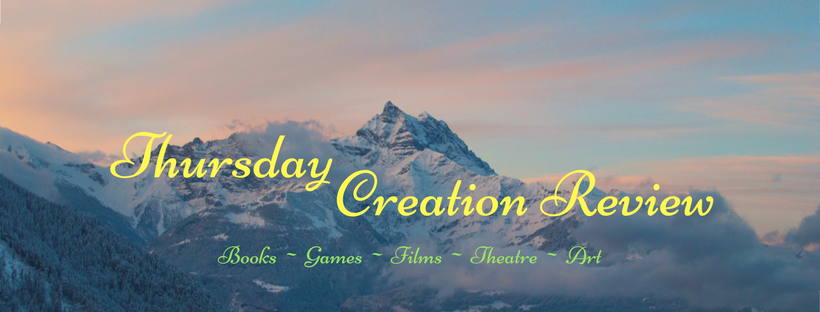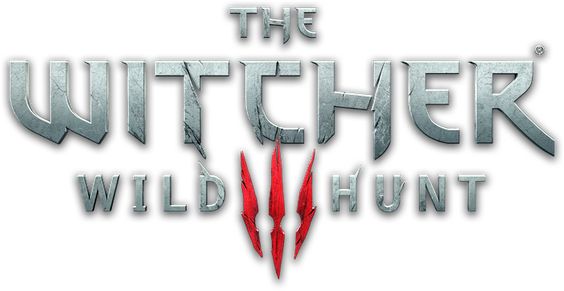
Ever since I met Geralt of Rivia in the game, The Witcher 3: The Wild Hunt and posted about it in W is for Witcher, I have been exploring the origins of that world in the creations of Andrzej Sapkowski.
Most recently on this blog site, I posted a brief update in my 2020 Blogging from A to Z Challenge revisits – my best posts from the 2014 to 2019 Challenges. The post was a link back to my 2018 delve into the Witcher origins:
https://rolandclarke.com/2020/04/27/w-for-witcher/
The extent of my interest/obsession with all things Witcher extended to a game review:
https://rolandclarke.com/2018/07/19/witcher-3-the-wild-hunt-a-review/
And a review of the first book in Geralt’s chronology – a collection of short stories which introducing Sapkowski’s character to a growing audience: The Last Wish:
https://rolandclarke.com/2018/05/24/the-last-wish-a-review/
Then the second collection of shorts – Sword of Destiny:
https://rolandclarke.com/2018/06/28/sword-of-destiny-a-review/
However, my journey didn’t end there as the Witcher world is growing – even before Netflix released the TV series over Christmas. In Witcher 3, there was an addictive card game called Gwent – well, addictive for some players like me. I even have a physical set of all the cards and a board.
Plus, the developers behind the video games, CD Projekt Red, have an ongoing online version of Gwent, which even includes international tournaments. I’m now addicted to online Gwent when I can find the time. I also completed CDPR’s Thronebreaker: The Witcher Tales, which also has Gwent at its heart.
But I digress as this post is ultimately a review of the next three books – part of Sapkowski’s awesome world-building. And my reading continues from here, so expect more.

The Witcher Boxed Set
This special boxed set includes the first three novels in Andrzej Sapkowski’s New York Times bestselling epic fantasy saga — the books that introduced the world to THE WITCHER and inspired the hit Witcher video games.
“The universe of Sapkowski’s The Witcher is one of the most detailed and best-explored in modern fantasy.” —B&N
For over a century, humans, dwarves, gnomes, and elves have lived together in relative peace. But times have changed, the uneasy peace is over, and now the races are fighting once again. The only good elf, it seems, is a dead elf.
Geralt of Rivia, the cunning assassin known as The Witcher, has been waiting for the birth of a prophesied child. This child has the power to change the world – for good, or for evil.
As the threat of war hangs over the land and the child is hunted for her extraordinary powers, it will become Geralt’s responsibility to protect them all – and the Witcher never accepts defeat.
In Blood of Elves, The Time of Contempt, and Baptism of Fire, Sapkowski brings a fresh new voice to fantasy fiction, creating something wholly dark and exciting in this world of fairy tales and witchers.
Review 4.4 stars
I confess to being engrossed – probably obsessed – by Andrzej Sapkowski’s Witcher universe. It’s a fantasy world unlike the Norse/Anglo-Saxon/Celtic one I grew up absorbing. Trying to review the books out of their overall context is hard. They don’t read as standalone novels, although each one has a different style in how the tale is told and in emphasis, whether in who is the primary character or the overarching theme.
Each novel reads differently, sustaining the epic length of the saga. I admire Sapkowski’s ability to change styles – and applaud the translator. One crucial piece of advice: read the books in sequence and start not with Blood of Elves, but with The Last Wish https://www.goodreads.com/book/show/40603587-the-last-wish –– as past events are key to the unfolding saga.

Blood of Elves: https://www.goodreads.com/book/show/6043781-blood-of-elves
Geralt may be a Witcher, a hired monster slayer, but his challenge is now the Child of Destiny, the Princess Ciri who escaped the destruction of Cintra. There are monsters, but unlike the two earlier initial books of short stories, his concern is personal and more of the monsters are human. Politics and racial tensions are simmering.
Ciri and those who care for her have become the focus, not just Geralt. Learning about the Witcher universe is a learning process – for us and Ciri – and the jigsaw shimmers into view…although not all at once.
Some readers expected more about Geralt, but the key to his destiny and others is now Ciri. So, other characters play crucial roles – like the sorceress Yennefer, Geralt’s on-off love.
A second war between the Empire of Nilfgaard and the Northern Realms is brewing – and it helps to know more of the background from the shorts. The reader is given some clues and hints, but explaining the intricacies, the twists, the deceptions of politics – and history – will take a few books. It’s complex as in real life.
Yes, there are ‘pages of dialogue’ and Sapkowski indulges in writing chunks of text, sometimes verging on the didactic. Yet, I was engrossed and never stopped read – and adding to my knowledge of a richly-painted and crafted world. Having met a few familiar characters from the shorts – and played Witcher games – I was keen to read more about the Child of Destiny, about whether this child of prophecy will save the world or herald its destruction.

The Time of Contempt: https://www.goodreads.com/book/show/14781491-the-time-of-contempt
The story from Blood of Elves develops with increasing complexity as more players get involved – which means more POVs and threads. For those who want a Witcher slaying monsters, beware. Be prepared for political intrigue instead, when a coup threatens the Wizard’s Guild, war breaks out across the lands, and everyone knows what’s best for Ciri.
Including Geralt, but a serious injury leaves the Witcher fighting for his life, while Ciri, in whose hands the world’s fate rests, has vanished. The threads, twists, deceptions, double-crossings, intrigues, and intricacies are spreading – like a disease.
And yes, there are chunks of Sapkowski’s trademark sermonic yet instructive info-dumps. I welcomed them as I’m open to indulging in his world-building, but I recognise many aren’t. But then I’m an addict who even plays the Witcher games, so I dive down research rabbit holes with little prompting.
Anyway, this continuation builds on the previous book – in a more varied and engrossing style. There are distinct approaches to the storytelling, depending on the protagonist – and there are some more now. We get a chance to see events from various angles, depending on the character’s allegiances to one of the Northern Realms, the Nilfgaard Empire, the non-human Scoia’tael, or those caught up in the struggles. Some are poignant and tragic, like a King’s messenger called Aplegatt – one of my favourite chapters. Trying to remain neutral is hard, especially for Geralt.
“It’s incredible,’ the Witcher smiled hideously, ‘how much my neutrality outrages everybody.’”
The portrayal of the non-humans is not idealised either – be they dwarves, gnomes, elves, or dryads. They may wage a bloody struggle against humans, but I understand why they fight and for what since Sapkowski portrays their dilemma in detail.
The book has a cliff-hanger, but the author’s impudently clever explanation made me chuckle. And I had to read the next book.

Baptism of Fire: https://www.goodreads.com/book/show/18656031-baptism-of-fire
Onto Book 3 of this Witcher set and the weaving threads bring in new characters – ones I know from the Witcher 3: The Wild Hunt game and the Gwent card-game. As I read more and more, engrossed, I was wishing I’d bought the next two books.
Anyway, the plot layers are growing. Now that dark times have fallen upon the world, Geralt is helpless until he has recovered from his injuries – in Brokilon, home of the dryads. While war rages across all the lands, the future of magic is under threat and those sorcerers who survive are determined to protect it. It’s an impossible situation in which to find one girl – Ciri, the heiress to the throne of Cintra. She has vanished – until a rumour places her in the Nilfgaard court, preparing to marry the Emperor.
However, the reader knows differently, although Ciri is struggling to survive and too far from those like Geralt, who want to help her. Her story takes disturbing turns as she stumbles from one challenge to another, discovering innate skills. Her ‘adventures’ are told in a contrasting style to the events of those searching/pursuing her.
More characters are introduced with varying agendas and idiosyncrasies – distinct too…with a few forgivable tropes. However, most are complex and deceptive. Never trust first appearances. Geralt adds to his traveling companions at various crossroads, and I welcomed meeting Emiel Regis Rohellec Terzieff-Godefroy, having encountered Regis in the Witcher 3. Let’s just say Regis, the intellectual barber-surgeon of Dillingen is one of the best characters in all the books – comparable in a way to Borch Three Jackdaws alias Villentretenmerth from one of the earlier short stories.
There are the expected passages that some readers skip as didactic sermonising – or bad writing – and others like me relish as informative. There are other wonderful descriptive passages – as in the other books – but then I’m a sucker for purple prose if it captivates in its craft. Easily satisfied?
By the expected/foreshadowed climax/cliff-hanger, I was wondering where the Rats would end up and whether Geralt would find Ciri before chaos ensued. So, I spent my money and I’m now reading the final two books in the series – but those reviews must wait.
Having given up recently on another trilogy, as scenes felt repetitive – copy & pasted almost – this set of books was an engrossing read.
This isn’t my number one fantasy saga/series, but for all its faults, I rate it for what it adds to the genre. My favourite isn’t even any of the obvious ones. [See the When Women Were Warriors Series https://www.goodreads.com/series/46351-when-women-were-warriors]
Story – five stars
Setting/World-building – five stars
Characters – five stars
Diversity – four stars
Structure – four stars
Readability – four stars
Editing – four stars










![survivor-atoz [2018] v1 (1)](https://rolandclarke.files.wordpress.com/2018/05/survivor-atoz-2018-v1-1.jpg)